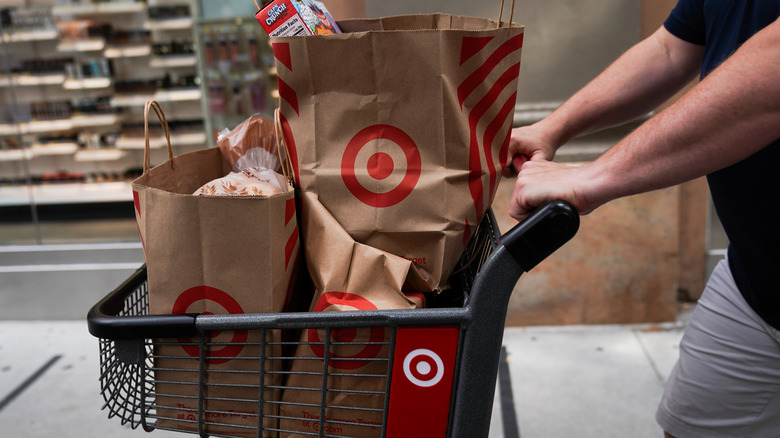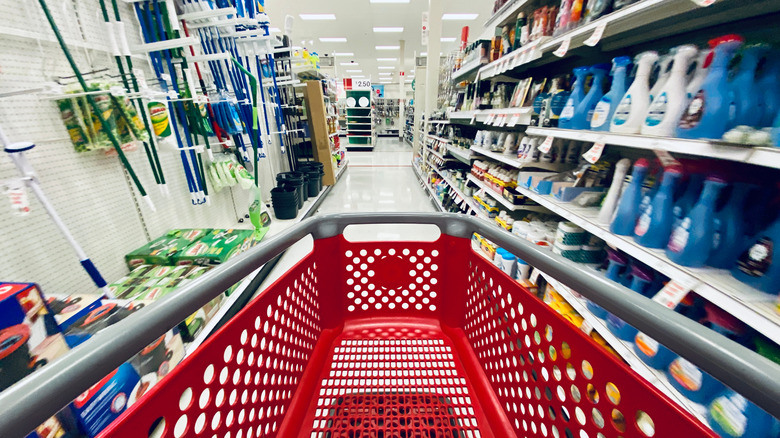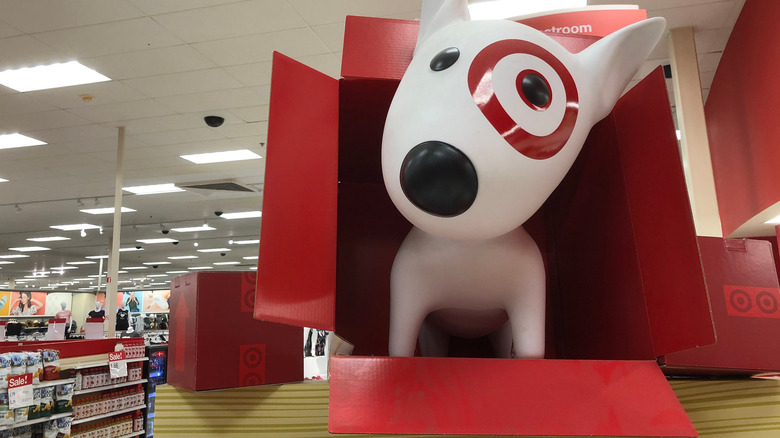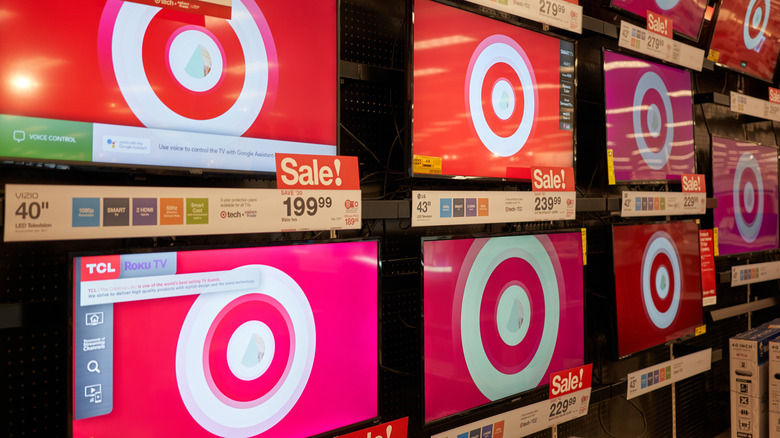The 'Target Effect' Is Real And You're Not Alone
Anyone that has ever shopped at Target has undoubtedly walked in looking to pick up just a few things on their list only to emerge from the store much later than anticipated and with more money missing from their account than they imagined. Even if you personally have not done this — though, be honest, we all have — you've at least seen others joke about their Target shopping habits online. As it turns out, this isn't just a lack of control among those who frequent the low-price retail store. In fact, this behavior even has a name. It's called the "Target Effect" (via NBC News). And the "Target Effect" plays a much bigger role in your shopping experience at the store than you maybe even know.
Though, once shoppers get home and empty their bullseye bags of new possessions only to find a hodgepodge of items that might seem superficially random, the truth of the matter is that everything about Target makes customers want to buy more. The stores are even designed to market products you might not realize you want or even need until you've tossed them in the cart and returned home. Fortunately, psychologists and other experts have studied this behavior and have the answers as to why we do it and how Target convinces us to take part in the phenomenon.
Target's product placement plays a huge role
One of the most notable and more obvious ways that Target convinces people to buy more while shopping is through genius product placement. Any college kid that has ever seen ping pong balls and Solo cups located in the beer aisle of a store knows this trick. Based on extensive data that has tracked what customers buy in tandem during store visits, Target has been able to pair products in different aisles for more convenient shopping and subliminal consumption that adds up to more spending too (via Refinery29).
Tom Meyvis, a marketing professor at New York University's Stern School of Business, explained to Refinery29 that "stores have an idea about the path [shoppers take]." That's another way that allows Target to place products around the store so well. "So when people come in for something in one category, you can cross-sell, you can sell them something that compliments in the next product category by making sure they're right next to each other," Meyvis added.
Target also makes good use of staging its products. From mock bedrooms and living rooms to mannequins wearing the latest clothes and much more, Target displays products in a familiar and ambitious lifestyle setting so customers can easily see themselves using those goods themselves. Joe Perdew, Target's Vice President of Store Design, told Refinery29, "Our revamped beauty department looks like a specialty shop and is designed to invite guests to try out products, and in [the] home [department], products are cross-merchandised and displayed in lifestyle settings, so guests can imagine what they'll look like in their own homes." In a nutshell, the entire store is a suggestive sell to customers.
The 'Target Effect' plays on people's emotions
If you've ever walked into a dingy retail store or even seen one with a flickering light in a television show or commercial, then you know Target is a haven by comparison. Having a bright and airy space with pops of color simply makes people want to spend more. Dr. Kevin Chapman, a psychologist from Kentucky, told Refinery29 just how it works. "It's really well lit at Target, right? There's a lot of color at Target. It's pretty consistent throughout the store and generally, that's going to make people feel happier," he said. And, naturally, when people feel happier inside of a store, they are inclined to buy more.
However, Dr. Chapman explained to NBC News that this is really imperative when it comes to people who are using "shopping as an emotional behavior to provide relief from strong emotions" or using shopping as a bandaid to feel temporary relief from real world pressures. "Many people just have a hard time dealing with certain emotional experiences, say anxiety," Dr. Chapman explained. And he adds, that means they "try to do things to feel better. Retail therapy makes them feel better temporarily but the problem is it contributes to more negative consequences." So ultimately, the "Target Effect" is also a coping mechanism for some people to cover up those times when they are feeling bad.
Target uses psychological pricing too
The last component of the "Target Effect" is the pricing strategy the retail giant uses. Dr. Chapman told Refinery29 that Target employs "psychological pricing." Essentially, the store labels products with prices that customers perceive as a deal, even if it doesn't actually work out that way. This occurs in two ways at Target.
The first is pricing items that end in a nine rather than a zero. So instead of buying something for $30, people are more likely to spring for it if it is labeled as $29.99. Even though the one-cent difference really doesn't change much, it tricks the brain into thinking it's a deal.
Target also convinces customers they're getting a bargain by placing items that are not just $1 in the dollar section at the front of the store. Customers might find items they think are cute or fun that are actually $2, $3, or even up to $5. But it still seems like such a good deal that people readily toss those items into their carts adding to their overall total expenditure.
So, the next time you visit Target, keep these things in mind. You might actually want and need the items the store is marketing, but you can remind yourself that you might not need to buy them this trip. With so many stores across the nation, you can always go back if you change your mind.



